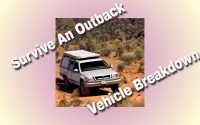Underground Panic Rooms
Underground Panic Rooms
What would you do if a tornado struck or you needed to protect yourself from a potential threat? The natural choice is to seek shelter, but sheltering in your basement under a table is not the best option!
Safe rooms are essential for comprehensive protection and purpose building since they guard against weather emergencies and security risks.
The safe room, also known as a panic room, is often used interchangeably. A secure panic room can also serve a specific function, such as protecting critical things and persons from blasts or forced entry.
In this case, the panic room will be created with explosion mitigation in mind, including blast-proof windows, bullet-proof doors, and FP-based walls.
Underground Panic Rooms: What Are They?
A panic room is a purpose-built facility that protects the people inside. Such rooms can be constructed within residences, government buildings, embassies, and public spaces.
When we talk about panic rooms, there are two types:
Aboveground Panic Rooms
Underground Panic Rooms
Aboveground panic rooms are typically built at ground level to provide quick access in an emergency.
However, such rooms are ineffective in tornadoes because flying debris can readily collapse on the room, making it exposed.
Similarly, aboveground panic rooms are easily accessible, making them less safe in a criminal attack.
On the other hand, underground panic rooms are built below ground and can easily withstand hurricanes and tornadoes.
Even in an attack or blow, most of the structure is built below ground, providing excellent safety.
Why Do You Need an Underground Panic Room?
Now, let’s look at some of the reasons you need an underground panic room:
Safety
The first and most obvious advantage is that an underground panic room offers protection from extreme weather or in the event of an attack.
For example, debris can fall on an aboveground panic room from all directions. However, it will only affect a subterranean panic room’s entrance or top side.
In the event of a significant explosion, an underground panic room can provide excellent safety because the construction is below ground!
Furthermore, these structures can be strengthened with bomb-proof windows, blast-proof doors, and even forced entry-resistant doors to provide further protection.
Higher Property Value
Adding an underground panic room to your home might boost its property value.
Adding a secure room to your home can boost its value and function as a selling point!
A built-in safe/panic room can be quite beneficial, especially in places that require extreme weather protection or increased security.
Extra Storage
A panic room is designed to give protection and security in the event of a crisis or attack, but it can also be used as additional storage space throughout the year.
In addition to providing security, the panic room can store objects that would otherwise take up too much space in your home!
Another advantage is that you can stockpile essential supplies and keep them in your panic room.
Are safe rooms superior to underground storm shelters?
Explained
The United States has the highest annual tornado count. In 2021, the United States experienced approximately 1376 tornadoes, a higher number than the previous year’s 1075 tornadoes.
The government permits using safe rooms or storm shelters to defend against tornadoes and keep you safe.
Despite their varied construction and locations, safe rooms and underground storm shelters serve the same purpose.
You may wonder if you should create a safe room or an underground storm shelter. Let’s go over the distinguishing features so you can make an informed decision.
Underground Storm Shelters are not flood-resistant.
Tornadoes, like rain, require a variety of environmental variables.
They form during thunderstorms with the appropriate pressure. Following the tornado, considerable rain may fall, posing a problem for underground storm shelters.
Because they are built below ground level, severe rains might create flooding, rendering them unusable. On the other hand, safe rooms built above ground are made of reinforced steel, giving them an edge over underground shelters.
Underground shelters are unaffected by high-speed winds.
The location of storm shelters and safe rooms is also essential. The tornado’s high-speed winds do not harm underground storm shelters because they are located underground. Because it’s underground, it protects you from high-speed debris.
Safe rooms must be made of reinforced steel to withstand the full impact of 300 mph tunnelling tornado winds and flying debris. When purchasing a safe room, check for FEMA approval.
Underground Shelters Can Be Buried Under Rubble.
Tornadoes cause extensive damage to structures and can entirely transform the environment where they pass. It has the potential to demolish structures and leave them in disrepair.
Underground shelters can be a disadvantage since they can become buried under debris and rubble shortly after the storm has passed. You could become trapped inside, forcing you to wait for rescuers to arrive.
Safe rooms located above ground are less likely to be smothered by rubble. They are also more visible than the underground refuge, which may take rescuers a little time to locate.





